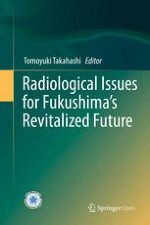17.1 Introduction
17.2 Materials and Methods
17.2.1 Irrigation Water
17.2.2 Soils
Exchangeable | |||||||
|---|---|---|---|---|---|---|---|
Total C | K | Ca | Mg | CEC | |||
Name | Soil types | pH(H2O) | (g kg−1) | (mg kg−1) | (cmolc kg−1) | ||
Minamisoma | Gray lowland soil | 6.3 | 14 | 150 | 1640 | 390 | 9.1 |
Soil A | Andosol | 5.6 | 79 | 25 | 1220 | 170 | 15.2 |
Soil B | Gray lowland soil | 6.6 | 9.1 | 134 | 2160 | 553 | 11.4 |
